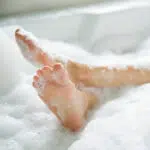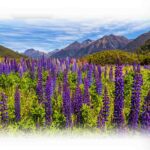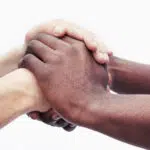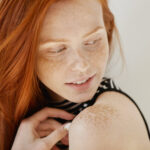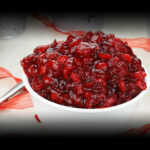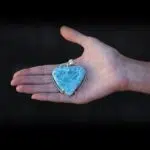Love Your Freckles Day, on November 22, is all about celebrating and flaunting freckles. Commonly found in redheads or those whose parents are respectively dark and fair, freckles are cute, sunkissed spots that make most of those blessed with them look wonderfully unique and natural! Synonymous with youth, and sported by beauties including model Adwoa Aboah, ‘Big Little Lies’ star Zoë Kravitz, and the actor Lily Newmark, the freckled face offers an idiosyncratic alternative to those flawless Instagram selfies where make-up is applied in thick, opaque layers. On this day, make sure to appreciate freckled faces all over the world.
History of Love Your Freckles Day
It’s time to celebrate sunkissed marks on Love Your Freckles Day. Even though freckles are considered to be ‘trend’ recently, it wasn’t always that way, even historically. Freckles — dermatologically called ephelides — are small, brownish, well-circumscribed, spots on the skin occurring most frequently in red or sandy-haired individuals.
The variants of the MC1R gene that are linked with freckles started to emerge in the human genotype when humans started to leave Africa. The variant Val92Met arose somewhere between 250,000 and 100,000 years ago, long enough for this gene to be carried by humans into central Asia. Freckles occur in people with heritage from around the world. While it’s true that such a mutation in people of Celtic heritage causes the stereotypical dot-dot-dots in fair redheads, variations of the MC1R gene lead to freckles in Chinese, Japanese, French, Mediterranean, Israeli, and certain African ethnic groups as well.
The word freckle, first used in the 14th century, arose out of the middle English word freken, which is probably of Scandinavian origin, according to Webster’s dictionary. The layman’s term freckle can stand for two distinct dermatologic entities and lentigines. From the late 19th through the early 20th century, freckles were seen as unsightly blemishes that needed to be banished from the complexion, demonstrated by adverts such as a Pond’s Vanishing Cream ad from 1910.
From 1914 to 1928, some ads were downright harsh, calling freckles “homely” and shameful. A shift occurred in the perception of freckles when somewhere in the mid to late 20th century they became acceptable and even desirable. Perhaps the rise of the tan’s popularity was a factor — as early as the 1950s — correlating to health and a life of leisure, and a byproduct of spending quality time in the sun is the production of freckles.
By the ’90s, freckles were also linked to a more youthful appearance, an association that continues over 20 years later. In fact, Chanel was the first company to market a product designed to create faux freckles in 1995. Now, freckles are widely seen as unique and beautiful, which is why they should be celebrated not just on Love Your Freckles Day, but every day!
Love Your Freckles Day timeline
The variants of the MC1R gene that are linked with freckles start to emerge in the human genotype when humans start to leave Africa.
Freckles were seen as unsightly blemishes that needed to be banished from the complexion, demonstrated.
Freckles become so popular that brands begin marketing a product designed to create faux freckles.
Freckles become trendy. Megan Markle refuses to cover her natural freckles and Ariana Grande’s freckles making the cover of British Vogue.
Love Your Freckles Day FAQs
Are freckles bad?
Fortunately, neither freckles nor sunspots are harmful. Even though they are benign, it is still important to monitor their appearance to make sure there are no irregularities or changes which could indicate malignant melanoma or skin cancer.
What causes freckles to suddenly appear?
The exposure to UV-B radiation activates melanocytes to increase melanin production, which can cause freckles to become darker and more visible. This means that one who has never developed freckles may develop them suddenly following extended exposure to sunlight.
Do freckles go away?
Some people have freckles that fade away almost completely in the winter and return in the summer. Other people’s freckles don’t change much with or without the sun and can be seen year-round. Freckles also tend to fade as people get older.
How To Celebrate Love Your Freckles Day
Don’t cover your freckles!
If you are blessed enough to have freckles, skip your foundation and powder and don’t cover them! Let them shine in all their natural glory. If Meghan Markle asks make-up artists to leave her freckles uncovered whenever possible — they are said to be her favorite feature — then you can too!
Appreciate freckles all over the world
Have you ever seen incredible photography of people from various cultures around the world flaunting their freckles? It’s quite a sight to behold. National Geographic showcases some of the best photographers in the world capturing the beauty of freckles. Photographer Fritz Liedtke actually states freckles are his favorite subjects. When he was taken out for dinner by a woman with ‘amazing freckles,’ he had become fascinated with people with freckles ever since, taking world-class photos of their freckled faces.
Compliment someone with freckles
If you see a freckled person down the street, or meet someone with freckles, or have friends or family members with freckles, today is the day to especially compliment their features! Most people love to be complimented and it will also make you feel great.
5 Amazing Facts About Freckles
Freckles are genetic
Freckles are linked to a key genetic player in regulating our skin and hair color — a gene known as MC1R controls how much of two different kinds of melanin we produce
Nobody is born with them
Have you ever seen a newborn baby with freckles? No, because freckles are always from sun exposure, which causes the pigment making cells in our skin to rev up and create more pigment
They double as a natural sunscreen
The melanocytes in freckles act as a natural sunscreen by darkening our face and thus make the skin less susceptible to UV rays.
Not all redheads have them
While redheads have less melanin in their skin, contrary to popular belief, not all of them have freckles — they're thought to be controlled by the same gene, but red hair is recessive, and freckles are a dominant trait.
Freckles were considered witches’ marks
In Medieval times, they were considered witches' marks. Never mind that men have and will always be just as susceptible to them — right up there with moles, warts, and birthmarks — freckles were said to be indicative of a woman's allegiance to the devil.
Why We Adore Love Your Freckles Day
It celebrates diversity
How boring would the world be if we all looked the same? Love Your Freckles Day is all about celebrating the diversity and uniqueness of freckles, which is not just seen on a redhead person with fair skin. Make sure to look around and see people with all kinds of skin tone and hair colors rocking their natural freckles.
It reminds us freckles are beautiful!
Despite some warped historical perspectives about freckles being ‘shameful’ and ‘homely,’ we are now in a day and age where freckles are widely celebrated and loved in most places around the world. So much so, beauty magazines and YouTube tutorials are teaching us how to apply faux freckles, from henna to eyeliner dotted across the face to get that ‘sunkissed natural look.’ It’s a wonderful reminder to appreciate men and women who have natural freckles and don’t need to apply any fake ones!
It’s a reminder of summer
If you do manage a full day out in the sun and afterward, your biggest ‘problem’ is freckles, then you are a lucky person indeed! The arrival of summer is always an event to celebrate. You know summer has arrived from the tell-tale signals — a midnight thunder and lightning storm, finding fresh watermelon for sale at the market, the first day it’s warm enough to wear sandals out – and of course, the appearance of freckles.
Love Your Freckles Day dates
| Year | Date | Day |
|---|---|---|
| 2025 | November 22 | Saturday |
| 2026 | November 22 | Sunday |
| 2027 | November 22 | Monday |
| 2028 | November 22 | Wednesday |
| 2029 | November 22 | Thursday |

